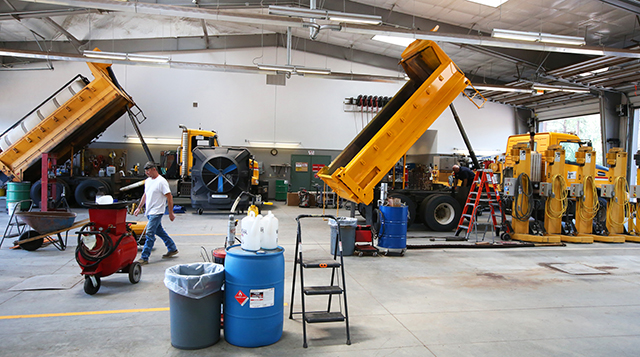Aquarium displays marine life off of Mexico’s Baja peninsula
Published 12:00 am Sunday, April 3, 2016

- Curator of Fish and Invertebrates Scott Greenwald works on one of the areas housing the new exhibit at the Monterey Bay Aquarium.
Viva Baja! Get a gander at a fanged green moray eel, a bug-eyed bluespotted jawfish and a regal orange Pacific seahorse, all floating through the majesty of their nautical realm. These are just a few of the whimsical and beautiful creatures you’ll encounter at the Monterey Bay Aquarium’s new “Viva Baja! Life on the Edge” exhibit, which opened in March.
No passport is needed for this mesmerizing journey to the underwater wonders of Mexico’s Baja peninsula, a land steeped in legend and folklore where the cactus-dotted desert meets the endless aquamarine sea. While many of us associate the 800-mile peninsula with powder-soft beaches and salt-rimmed margaritas, the creators of this exhibit want to showcase the richness and diversity of the Baja ecosystem, from the splashy splendors of the Vermilion Sea to the owls that perch amid the golden sands of the Sonoran Desert. Two years in the making, this 7,000-square-foot exhibit frames a vast, tropical panorama that plunges us into the mysteries of the big blue and beyond.
Trending
“We wanted to tell a new and unexpected story of Baja, a story of life on the edge,” says senior exhibit developer Raul Nava. “It’s a very special and unique environment and it’s also a fragile ecosystem.”
Indeed, some of the creatures on display here are endangered, and the exhibit prompts us to think about the effect people have on nature. Many of the region’s legendary coral reefs are in distress. The jaunty Pacific seahorse, which can grow to about a foot in length, is the only type of its kind found off the coast of California, but it’s also listed as “vulnerable.” The vaquita porpoise, whose name means “little cow” in Spanish, is being threatened by pirate fishing, largely illegal gill-netting for the totoaba, also a critically endangered fish. There are now only 100 vaquitas left to glide through the waters near the peninsula.
Protecting the ocean is a key message for Nava, who stresses that there is always hope to turn the tide. He points to the ecotourism hub at Cabo Pulmo at the tip of Baja, where fishermen banded together to stop overfishing in favor of adopting a sustainable model of tourism. The coral reefs have become a resource to be cherished instead of plundered.
“People there are making a positive change right now,” Nava says, “and we can learn from that and be inspired by their actions. We can learn to become good stewards of the ocean.”
Staring at the mesmerizing shimmer of shiny fish flashing through the azure depths, it’s easy to see why oceanographer Jacques Cousteau called the Sea of Cortez “the world’s aquarium.” “Viva Baja” is a chance to immerse yourself in the beauty and wonder of the deep without ever getting wet.
Visitors are invited to traipse through six galleries teeming with the wildlife specimens, from the scaly to the slithery, that make their home in the legendary Sea of Cortez. From the hermit crabs scuttling along the coral to the tiny fish darting through the mangroves, this is a rare and memorable vista into the mysterious world below the surface of the water. Here you can glimpse beauties generally only spied by snorkelers and divers: the official-looking stripes of the sergeant major damselfish, the strange spikes of the porcupinefish, the radiant pink sheen of the Cortez rainbow wrasse.
Trending
“We wanted to create an immersive experience,” Nava says. “There’s always something to look at and touch as you move through the environment.”
The uniqueness of the “Viva Baja!” exhibit, which is bilingual, is part of its allure. This is the first time the aquarium has showcased desert animals such as the poky little desert tortoise, the round-bellied iguana, the crimson-colored mountain kingsnake and the formidable Western desert tarantula.
“The terrestrial creatures are a new adventure for us,” Nava says. “It’s exciting to showcase the land animals right next to their marine neighbors.”
Winding through the exhibit you might find yourself staring at a rattlesnake tail that you can shake to scare away predators. Beware the neon scorpion that flashes fluorescent colors when plunged into the darkness of its tiny, cavelike home. The playful desert tortoise, which enjoys showing off for visitors, stretching his neck as far out of his shell as he can and shuffling around on thick claws, is a friendlier native of this mythical terrain.
If you long to take a piece of this magical gallery home with you, you can create your own tropical fish in a high-tech exhibit and add it to the digital fish tank here, as well as share your new fish BFF on social media. Consider it a virtual souvenir of your visit to this wild and untamed oasis of sand and sea.








